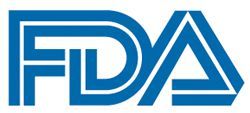Article
FDA Approves Iopromide Injection for Contrast-Enhanced Mammography
Author(s):
The FDA has approved the first and only iodine-based contrast agent iopromide-300, -370 injection for intra-arterial and intravenous contrast-enhanced mammography.
FDA

The FDA has approved the first and only iodine-based contrast agent iopromide-300, -370 injection (Ultravist) for intra-arterial and intravenous contrast-enhanced mammography. The technology aids mammography and/or ultrasound in the identification of known or suspected breast lesions in adults.
“The approval of [iopromide] in contrast-enhanced mammography gives physicians a new imaging option where conventional mammography might not be enough,” Konstanze Diefenbach, MD, head of Radiology Research and Development at Bayer, said in a press release. “We are pleased to be able to offer additional options for breast imaging to healthcare professionals, as we aim to support them in their role of providing clear answers from diagnosis to care for patients.”
Approximately 40% to 50% of women with breast cancer older than 40 with dense breasts are at higher risk and in need of improved imaging modalities. Contrast-enhanced mammography is an emerging technology that combines digital mammography with the use of a contrast agent to help detect breast lesions. In addition to improved visualization of breast lesions, contrast-enhanced mammography is a relatively low-cost imaging examination that is easily incorporated into a variety of clinical settings.
The approval of iopromide follows recent efforts to improve supplemental imaging tools for this population, providing another option when routine imaging results in inconclusive findings and when breast magnetic resonance imaging is not available or contraindicated.
For intra‐arterial procedures, iopromide is indicated for cerebral arteriography and peripheral arteriography in adults; coronary arteriography and left ventriculography, visceral angiography, and aortography in adults; and radiographic evaluation of cardiac chambers and related arteries in pediatric patients aged 2 years and older.
For intravenous procedures, iopromide may be used for excretory urography in adults and pediatric patients aged 2 years and older; contrast computed tomography of the head and body (intrathoracic, intra-abdominal, and retroperitoneal regions) for the evaluation of neoplastic and non-neoplastic lesions in adults and pediatric patients aged 2 years and older; and contrast mammography to visualize known or suspected lesions of the breast in adults, as an adjunct following mammography and/or ultrasound.
Common adverse effects associated with the contrast agent include headache, nausea, injection- and infusion-site reactions, vasodilatation, vomiting, back pain, urinary urgency, chest pain, pain, dysgeusia, and abnormal vision.
Reference
FDA approves Bayer’s Ultravist® (iopromide) injection for contrast-enhanced mammography. News release. Bayer. June 23, 2023. Accessed June 26, 2023. https://bayer2019tf.q4web.com/news/news-details/2023/FDA-approves-Bayers-Ultravist-iopromide-injection-for-contrast-enhanced-mammography/default.aspx







